Doctor Stephen Vincent Strange is a fictional superhero appearing in American comic books published by Marvel Comics. Created by artist Steve Ditko and writer Stan Lee, the character first appeared in Strange Tales #110 (cover-dated July 1963). Doctor Strange serves as the Sorcerer Supreme, the primary protector of Earth against magical and mystical threats. Inspired by stories of black magic and Chandu the Magician, Strange was created during the Silver Age of Comic Books to bring a different kind of character and themes of mysticism to Marvel Comics.
| Doctor Strange | |
|---|---|
Textless cover of Doctor Strange #2 (January 2016). Art by Alex Ross. | |
| Publication information | |
| Publisher | Marvel Comics |
| First appearance | Strange Tales #110 (July 1963) |
| Created by | Stan Lee Steve Ditko |
| In-story information | |
| Full name | Stephen Vincent Strange |
| Team affiliations | Avengers Defenders Illuminati Infinity Watch Midnight Sons New Avengers The Order |
| Partnerships | Clea Wong Ancient One |
| Notable aliases | Sorcerer Supreme Master of the Mystic Arts Captain Universe Stephen Sanders Vincent Stevens |
| Abilities |
|
The character's origin story indicates that he was once an egotistical surgeon. After a car accident severely damages his hands and hinders his ability to perform surgery, he searches the globe for a way to repair them and encounters the Ancient One. After becoming one of the old Sorcerer Supreme's students, he becomes a practitioner of both the mystical arts as well as martial arts, along with studying many powerful spells. He has a suit consisting of two main relics, the Cloak of Levitation and the Eye of Agamotto, which give him added powers. Strange is aided along the way by his friend and valet, Wong, and a large assortment of mystical objects. He takes up residence in a mansion called the Sanctum Sanctorum, located in New York City. Later, Strange takes the title of Sorcerer Supreme to help to defend the world against future threats.
In 2008, Doctor Strange was ranked 83rd in Wizard's "200 Greatest Comic Book Characters of All Time" list, and in 2012 was ranked 33rd in IGN's list of "The Top 50 Avengers". He was also ranked 38th on IGN's list of "Top 100 Comic Book Heroes". The character was first portrayed in live-action by Peter Hooten in the 1978 television film Dr. Strange. Benedict Cumberbatch stars as the character in the Marvel Cinematic Universe, first appearing in the role in the 2016 film Doctor Strange. He reprised the role in the 2017 film Thor: Ragnarok, the 2018 film Avengers: Infinity War, and will return in the fourth Avengers film in 2019.
Screenplay
Creation
Artist Steve Ditko and writer Stan Lee have described the character as having been originally the idea of Ditko, who wrote in 2008, "On my own, I brought in to Lee a five-page, penciled story with a page/panel script of my idea of a new, different kind of character for variety in Marvel Comics. My character wound up being named Dr. Strange because he would appear in Strange Tales." In a 1963 letter to Jerry Bails, Lee called the character Ditko's idea, saying:
Well, we have a new character in the works for Strange Tales (just a 5-page filler named Dr. Strange) Steve Ditko is gonna draw him. It has sort of a black magic theme. The first story is nothing great, but perhaps we can make something of him-- 'twas Steve's idea and I figured we'd give it a chance, although again, we had to rush the first one too much. Little sidelight: Originally decided to call him Mr. Strange, but thought the "Mr." bit too similar to Mr. Fantastic -- now, however, I remember we had a villain called Dr. Strange just recently in one of our mags, hope it won't be too confusing!
20th century
Early years
Doctor Strange debuted in Strange Tales #110 (July 1963), a split book shared with the feature "The Human Torch". Doctor Strange appeared in issues #110–111 and #114 before the character's eight-page origin story in #115 (December 1963). Scripter Lee's take on the character was inspired by the Chandu the Magician radio program that aired on the Mutual Broadcasting System in the 1930s. He had Doctor Strange accompany spells with elaborate incantations, such as the "Eye of Agamotto", the "Wand of Watoomb", and "Hoary Hosts of Hoggoth"; though these often referenced established mythological figures, Lee has said he never had any idea what the incantations meant and used them simply because they sounded mystical and mysterious. Ditko showcased surrealistic mystical landscapes and increasingly vivid visuals that helped make the feature a favorite of college students at the time. Comics historian Mike Benton wrote:
The Dr. Strange stories of the 1960s constructed a cohesive cosmology that would have thrilled any self-respecting theosophist. College students, minds freshly opened by psychedelic experiences and Eastern mysticism, read Ditko and Lee's Dr. Strange stories with the belief of a recent Hare Krishna convert. Meaning was everywhere, and readers analyzed the Dr. Strange stories for their relationship to Egyptian myths, Sumerian gods, and Jungian archetypes.
"People who read Doctor Strange thought people at Marvel must be heads ," recalled then-associate editor and former Doctor Strange writer Roy Thomas in 1971, "because they had had similar experiences high on mushrooms. But I don't use hallucinogens, nor do I think any artists do."
Originating in the early 1960s, the character was a predictor of counter-cultural trends in art prior to them becoming more established in the later 1960s. As historian Bradford W. Wright described:
Steve Ditko contributed some of his most surrealistic work to the comic book and gave it a disorienting, hallucinogenic quality. Dr. Strange's adventures take place in bizarre worlds and twisting dimensions that resembled Salvador Dalí paintings. Inspired by the pulp-fiction magicians of Stan Lee's childhood as well as by contemporary Beat culture, Dr. Strange remarkably predicted the youth counterculture's fascination with Eastern mysticism and psychedelia. Never among Marvel's more popular or accessible characters, Dr. Strange still found a niche among an audience seeking a challenging alternative to more conventional superhero fare.
As co-plotter and later sole plotter in the Marvel Method, Ditko took Strange into ever-more-abstract realms. In a 17-issue story arc in Strange Tales #130-146 (March 1965 – July 1966), Ditko introduced the cosmic character Eternity, who personified the universe and was depicted as a silhouette filled with the cosmos. Golden Age artist/writer Bill Everett succeeded Ditko as artist with issues #147-152, followed by Marie Severin through #160 and Dan Adkins through #168, the final issue before the Nick Fury feature moved to its own title and Strange Tales was renamed Doctor Strange. Expanded to 20 pages per issue, the Doctor Strange solo series ran 15 issues, #169-183 (June 1968 – November 1969), continuing the numbering of Strange Tales. Thomas wrote the run of new stories, joined after the first three issues by the art team of penciler Gene Colan and inker Tom Palmer through the end.
After plans were announced for a never-realized split book series featuring Doctor Strange and Iceman, each in solo adventures, Strange next appeared in the first three issues (December 1971 – June 1972) of the quarterly showcase title Marvel Feature. He appeared in both the main story detailing the formation of superhero "non-team" the Defenders, and the related back-up story. The character then starred in a revival solo series in Marvel Premiere #3-14 (July 1972 – March 1974). This arc marked the debut of another recurring foe, the entity Shuma-Gorath, created by writer Steve Englehart and artist Frank Brunner, who took over as the regular creative team starting with Marvel Premiere #10. Englehart and Brunner collaborated closely on the stories, meeting over dinner every two months to discuss the series, and their run became known for its psychedelic visuals and plots. In issues #8-10 (May–September 1973), Strange is forced to shut down the Ancient One's mind, causing his mentor's physical death. Strange then assumes the title of Sorcerer Supreme. Englehart and Brunner created another multi-issue storyline featuring sorcerer Sise-Neg ("Genesis" spelled backward) going back through history, collecting all magical energies, until he reaches the beginning of the universe, becomes all-powerful and creates it anew, leaving Strange to wonder whether this was, paradoxically, the original creation. Stan Lee, seeing the issue after publication, ordered Englehart and Brunner to print a retraction saying this was not God but a god, to avoid offending religious readers. The writer and artist concocted a fake letter from a fictitious minister praising the story, and mailed it to Marvel from Texas. Marvel unwittingly printed the letter and dropped the retraction.
Due to the growing number of Doctor Strange readers, the Marvel Premiere series segued to the character's second ongoing title, Doctor Strange: Master of the Mystic Arts, also known as Doctor Strange vol. 2, which ran 81 issues (June 1974 – February 1987). Doctor Strange #14 featured a crossover story with The Tomb of Dracula #44, another series which was being drawn by Gene Colan at the time. In Englehart's final story, he sent Dr. Strange back in time to meet Benjamin Franklin.
1980s
Strange met his allies Topaz in #75 (Feb, 1986) and Rintrah in #80 (December 1986). The series ended with a cliffhanger as his home, the Sanctum Sanctorum, was heavily damaged during a battle. Among the losses was Doctor Strange's entire collection of mystic books and other important artifacts. As a consequence, Strange was now considerably weaker and several spells designed to protect humanity from vampires and the evil serpent god Set expired.
The title was discontinued so that the character's adventures could be transferred to another split book format series. Strange Tales vol. 2, #1-19 (April 1987 – October 1988) was shared with street heroes Cloak and Dagger. This new Doctor Strange series resolved Strange's quest to reclaim his power and missing artifacts, as well as resurrecting the Defenders, who had died in the last issue of that team's title.
1990s
Strange was returned to his own series, this time titled Doctor Strange: Sorcerer Supreme, which ran 90 issues (November 1988 – June 1996). The initial creative team was writer Peter B. Gillis and artists Richard Case and Randy Emberlin, with storylines often spanning multiple issues. Strange lost the title of "Sorcerer Supreme" in issues #48-49 (December 1992 – January 1993) when he refused to fight a war on behalf of the Vishanti, the mystical entities that empower his spells. During this time the series became part of the "Midnight Sons" group of Marvel's supernatural comics. Doctor Strange found new sources of magical strength in the form of chaos magic, as well as a magic construct he used as a proxy. He would form the Secret Defenders with a rotating roster of heroes, and reunite with the original Defenders. Strange regained his title in Doctor Strange: Sorcerer Supreme #80 (August 1995).
Strange appeared with the Human Torch and the Thing in the one-shot publication Strange Tales vol. 3, #1 (November 1994).
The character was featured in several limited series. The first was Doctor Strange: The Flight of Bones #1-#4 (February – May 1999), with a series of spontaneous combustions by criminals instigated by old foe Dormammu. Strange was the catalyst for the creation of a trio of sorceresses in Witches #1-#4 (August–November 2004). The Strange limited series (November 2004 – July 2005) by writers J. Michael Straczynski and Samm Barnes updated the character's origin. Another limited series, Doctor Strange: The Oath #1-5 (December 2006 – April 2007), written by Brian K. Vaughan and illustrated by Marcos Martin, focused on Strange's responsibilities as sorcerer and doctor.
Doctor Strange has appeared in four graphic novels: Doctor Strange: Into Shamballa (1986); Doctor Strange & Doctor Doom: Triumph and Torment (1989); Spider-Man/Dr. Strange: The Way to Dusty Death (1992); and Dr. Strange: What Is It That Disturbs You, Stephen? (1997).
Watch movie Doctor Strange online on Amazon
Watch movie Doctor Strange online
Watch The Movie On PrimeQurbani Full HD Movie Download
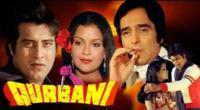
Highway Full HD Movie Download

Justice Chowdhary Full HD Movie Download
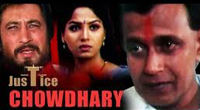
Well Done Abba Full HD Movie Download

No One Killed Jessica Full HD Movie Download
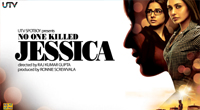
Anmol Moti Full HD Movie Download
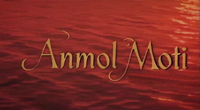
Swarg Full HD Movie Download
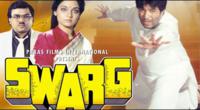
Paa Full HD Movie Download
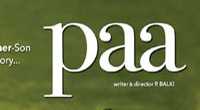
Ghar Ek Mandir Full HD Movie Download
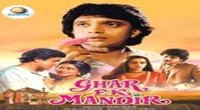
Ganga Aur Suraj Full HD Movie Download
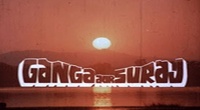
Meri Marzi (2011) Full HD Movie Download
.jpg)
Veerabaahu Full HD Movie Download
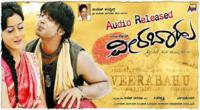
Poovilanghu Full HD Movie Download
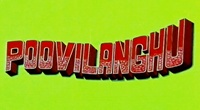
Doctor Babu Full HD Movie Download
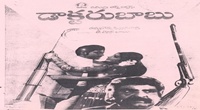
Sri Raja Rajeshwari (Telugu) Full HD Movie Download
.jpg)
Mahakali Ka Insaaf Full HD Movie Download
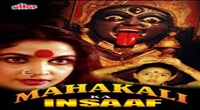
Dil Full HD Movie Download
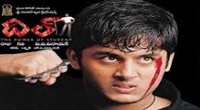
Sabhash Ramudu Full HD Movie Download
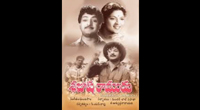
Naughty Boy Full HD Movie Download
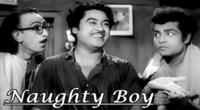
Nakhuda Full HD Movie Download
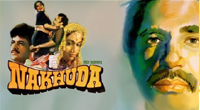
Ishaqzaade (2012) Full HD Movie Download
.jpg)
Download latest Movie from bollywood
- 1> baaghi 3
- 2> THE SKY IS PINK MOVIE FULL STORY AND REVIEW
- 3> Luka Chuppi
- 4> TO ALL THE BOYS I’VE LOVED BEFORE
- 5> Kabir Singh
- 6> Street Dancer 3D
- 7> Simmba
- 8> Gone Girl
- 9> The Girl Who Lived
- 10> Ludo
- 11> DILWALE DULHANIA LE JAYENGE
- 12> GUILTY
- 13> The Godfather
- 14> Adventures of Rusty
- 15> Sooryavanshi
- 16> Satyameva Jayate 2
- 17> Thappad
- 18> Bhool Bhulaiyaa 2
- 19> KGFChapter 2
- 20> Mardaani 2
- 21> Pinjar
- 22> Shivaji maharaj
- 23> Ek Villian 2
- 24> Hungama 2
- 25> Divergent
- 26> Mumbai Saga
- 27> The Internship
- 28> HIT (telugu)
- 29> Panga
- 30> The perfect date
- 31> 16 December
- 32> Gopala Gopala (Telugu)
- 33> Brahmastra
- 34> Gangubai Kathiawadi
- 35> Manmadhudu
- 36> Nenu local
- 37> Mahanati
- 38> Shatamanam bavathi
- 39> Lagaan
- 40> After
- 41> MOM
- 42> Shamshera
- 43> Raguvaran BTech
- 44> Khakee
- 45> The villain
- 46> OM
- 47> Mr. perfect
- 48> Bueatifull mind
- 49> Hichki
- 50> Gabbar Singh
- 51> Jogi
- 52> Before Sunrise
- 53> Before Sunset
- 54> Before Midnight
- 55> The Big Bull
- 56> Top Gun: Maverick
- 57> The Purge
- 58> The Sky is Pink
- 59> Laxmmi Bomb
- 60> Sadak 2
- 61> Sufna
- 62> Prithviraj
- 63> PK
- 64> Coolie No 1(2020)
- 65> Black Widow
- 66> Dear Zindagi
- 67> Dil Bechara
- 68> PHIR HERA PHERI
- 69> WAR
- 70> Dostana
- 71> RRR: Roudram Ranam Rudhiram
- 72> Maidan
- 73> Dabbang 3
- 74> Chhalaang
- 75> life as we know it
- 76> SherShaah
- 77> Sandeep Aur Pinky Faraar
- 78> Event Horizon
- 79> 83
- 80> Radhe: Your Most Wanted Bhai
- 81> Gunjan Saxena: The Kargil Girl
- 82> Mr India
- 83> Vivah
- 84> Anokha Bandhan
- 85> Ghost
- 86> Bhoot: Part One - The Haunted Ship
- 87> Haseen Dilruba
- 88> Laal Singh Chaddha
- 89> Qismat
- 90> Rajput
- 91> Drive
- 92> Dil Chahta Hai
- 93> Dil Ki Baazi
- 94> Dil Ka Rishta
- 95> Teesri Manzil
- 96> Dil
- 97> Love Aaj Kal
- 98> Khaali Peeli
- 99> Bunty Aur Babli 2
- 100> Atrangi Re
- 101> Gulabo Sitabo
- 102> Jodi
- 103> Suraj Pe Mangal Bhari
- 104> Deewana
- 105> Attack
- 106> Sardar Udham Singh
- 107> Toofan
- 108> THE LOVEBIRDS
- 109> Jersey
- 110> Ginny Weds Sunny
- 111> Thalaivi
- 112> Shiddat
- 113> Angels vs Zombies
- 114> Koi Mil Gya
- 115> Thank God
- 116> Bhuj: The Pride of India
- 117> Hum Aapke Hain Kaun
- 118> The Platform
- 119> Bird Box
- 120> Roohi Afzana
- 121> Torbaaz
- 122> Nikamma
- 123> World War Z
- 124> Extraction
- 125> Train to Busan
- 126> Life of Pi
- 127> SHAADI MEIN JROOR AANA
- 128> Himmat Aur Mehnat
- 129> To All The Boys: P.S. I Still Love You
- 130> Mimi
- 131> Good Newwz
- 132> Shubh Mangal Zyada Saavdhan
- 133> Raabta
- 134> Harry Potter and the Philosopher's Stone
- 135> Harry Potter and the Chamber of Secrets
- 136> Chhapaak
- 137> War of the Worlds
- 138> Harry Potter and the Prisoner of Azkaban
- 139> Harry Potter and the Goblet of Fire
- 140> MURDER MYSTERY
- 141> Shakuntala Devi
- 142> Bachchan Pandey
- 143> Jayeshbhai Jordar
- 144> Sheer Qorma
- 145> Saina
- 146> 'O' Pushpa I hate tears
- 147> Kedarnath
- 148> MS Dhoni The Untold Story
- 149> Chhichhore
- 150> Badhaai Ho
- 151> Unstoppable
- 152> Oz the Great And Powerful
- 153> The Girl on the Train
- 154> Haathi Mere Saathi 2020
- 155> The Conjuring: The Devil Made Me Do It
- 156> Gandhi Se Pehle Gandhi
- 157> The Song of Scorpions
- 158> Srimanthudu
- 159> Hello Guru Prema Kosame
- 160> Beauty and The Beast
- 161> Black Panther
- 162> Charlie and the Chocolate Factory
- 163> Bole Chudiyan
- 164> Fidaa
- 165> Duvvada Jagannadham
- 166> Bruce Lee: The Fighter
- 167> Hyper
- 168> Yaara
- 169> Red (2020)
- 170> Shivam
- 171> That Is Mahalakshmi
- 172> Nishabdham
- 173> Aashram 2020 web series
- 174> Laxmii
- 175> Mismatched
- 176> STUDENT OF THE YEAR 2
- 177> NAIL POLISH
- 178> Ramprasad Ki Tehrvi
- 179> KAAGAZ
- 180> 12 o Clock
- 181> The Power
- 182> bolo hau
- 183> Tribhanga
- 184> JAMUN
- 185> Madam Chief Minister
- 186> Maasaab
- 187> Aadhaar
- 188> Tanhaji
- 189> Bhaagi 3
- 190> Bhootnath
- 191> MALANG
- 192> Jai Mummy Di
- 193> Haathi Mere Saathi 2021
- 194> Shakeela
- 195> Unpaused
- 196> Annayya
- 197> Vamsoddharakudu
- 198> Mrugaraju
- 199> Narasimha Naidu
- 200> Sankranti
- 201> Manasu Maata Vinadhu
- 202> Anjaane
- 203> Apaharan
- 204> Bachke Rehna Re Baba
- 205> Bewafaa
- 206> Roohi
- 207> Radhe
- 208> Zindagi Khoobsoorat Hai
- 209> Yeh Mohabbat Hai
- 210> Yeh Kya Ho Raha Hai?
- 211> The Tomorrow War
- 212> DehradunDiary
- 213> Meri Shaadi Karaoo
- 214> Matruu Ki Bijlee Ka Mandola
- 215> No One Killed Jesica
- 216> Aag Ka Goola
- 217> Eight Million Dollars
- 218> Three Hundred
- 219> Cats and Dog
- 220> Decoy
- 221> Gold Rush
- 222> You Have Got Mail
- 223> Final Destination three
- 224> Tofan
- 225> Jungle
Request for Download movie Doctor Strange
- Bollywood movies
- Latest Bollywood movies
- Download all bengali movies
- Download all bhojpuri movies
- Download all english movies
- Download all gujarati movies
- Download all hindi movies
- Download all kannada movies
- Download all malayalam movies
- Download all marathi movies
- Download all oriya movies
- Download all punjabi movies
- Download all tamil movies
- Download all telugu movies
- Bollywood action movies
- Bollywood adventure movies
- Bollywood animation movies
- Bollywood classical movies
- Bollywood comedy movies
- Bollywood crime movies
- Bollywood devotional movies
- Bollywood documentary movies
- Bollywood drama movies
- Bollywood family movies
- Bollywood fantasy movies
- Bollywood historical movies
- Bollywood history movies
- Bollywood horror movies
- Bollywood musical movies
- Bollywood mystery movies
- Bollywood mythological movies
- Bollywood patriotic movies
- Bollywood romance movies
- Bollywood romantic movies
- Bollywood sci-fi movies
- Bollywood social movies
- Bollywood spiritual movies
- Bollywood sports movies
- Bollywood suspense movies
- Bollywood thriller movies
- Bollywood war movies
- Hot actress list
- Hot gujarati actress list
- Hot tamil actress list
- Hot bhojpuri actress list
- Hot assam actress list
- Hot bihari actress list
- Hot jammu and kashmir actress list
- Hot gujarati actress list
- Hot haryana actress list
- Hot konkani actress list
- Hot marathi actress list
- Hot odia actress list
- Hot punjabi actress list
- Hot rajasthani actress list
- Hot kannada actress list
- Hot malayalam actress list
- Hot telugu actress list
- Hot tulu actress list
- Hot Actress list from Indian city
- Hot actress list from ahmedabad
- Hot actress list from alappuzha
- Hot actress list from bangalore
- Hot actress list from bangalore
- Hot actress list from bhopal
- Hot actress list from chandigarh
- Hot actress list from chennai
- Hot actress list from guwahati
- Hot actress list from hyderabad, india
- Hot actress list from indore
- Hot actress list from jaipur
- Hot actress list from kannur
- Hot actress list from kochi
- Hot actress list from kolkata
- Hot actress list from kollam
- Hot actress list from kottayam
- Hot actress list from kozhikode
- Hot actress list from lucknow
- Hot actress list from madurai
- Hot actress list from mangalore
- Hot actress list from mumbai
- Hot actress list from mysore
- Hot actress list from new delhi
- Hot actress list from patna
- Hot actress list from pune
- Hot actress list from thiruvananthapuram
- Hot actress list from thrissur
- Hot actress list from tiruchirappalli
- Hot actress list from vijayawada
- Hot actress list from visakhapatnam
- All Bollywood Movies
- Bollywood Celeb
- >Art Director
- >Audiography
- >Background Music
- >Banner
- >Choreographer
- >Cinematographer
- >Costume Designer
- >Dialogue Writer
- >Director
- >Distributor
- >Editor
- >Executive Producer
- >Hair Stylist
- >Lyricist
- >Music Director
- >Photographer
- >Playback Singers
- >Presenter
- >Producer
- >Production Company
- >Production Designer
- >Screenplay
- >Singer
- >Sound
- >Actor
- >Story Writer
- >Studio
- >Video Director
- >Miscellaneous
- >Publicity (pro)
- >Web Creator
- >Production Labs
- >Publicity Design
- >Publicity Stills
- >Writer
- >Miscellaneous Artists
- >Visual Effects
- >Reporter
- >Music Company
- >Shooting Studios
- >Picturised On
- >Line Producer
- >Co Producer
- >Asst Director
- >Casting Director
- >Cinematography
- >Choreography
- >Dialouge
- >Editing
- >Lyrics
- >Music
- >Story
- >Playback Singer Female
- >Playback Singer Male
- >Actor In A Comic Role (male/female)
- >Child Artiste
- >Ensemble Cast
- >Actor Popular Choice (male)
- >Actor Popular Choice (female)
- >Sa Re Ga Ma Pa Song Of The Year
- >Actor In Supporting Role
- >Actress In Supporting Role
- >Actor In Leading Role
- >Art Direction
- >Actress In Leading Role
- >Sound Recording
- >Costume Design
- >Special Effects
- >Action
- >Actor In A Negative Role
- >Lifetime Achievement Award
- >Cinematic Exellence (director)
- >Cinematic Exellence (male)
- >Cinematic Exellence (female)
- >International Male Icon
- >International Female Icon
- >Actor In A Supporting Role (male)
- >Actor In A Supporting Role (female)
- >Actor In A Comic Role
- >Playback Singer (male)
- >Playback Singer (female)
- >Most Promising Debut (female)
- >Most Promising Debut (male)
- >Most Promising Director
- >Sound Design
- >Lifetime Jodi
- >Marketed Film
- >Jury Award For Best Actor
- >Jury Award For Best Actress
- >Jury Award For Best Film
- >Jury Award For Best Director
- >Playback Singer(male)
- >Lifetime Acheivement Award (male)
- >Excellence Award
- >Jodi Award
- >Performer Of The Year
- >Presented By
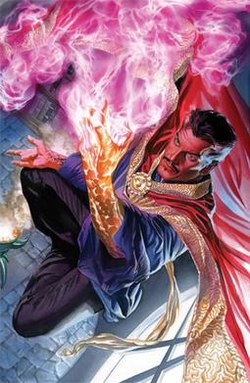 Story of movie Doctor Strange :
Story of movie Doctor Strange : 